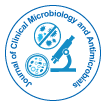

Reda Hassan Amasha
Ten halophilic bacteria (two gram-negative) belonging to the Halomonadaceae and (eight gram-positive), belonging to the Bacillaceae, were isolated from the Red Sea, Arabian Gulf and Dead Sea using a high salinity medium, followed by identification using 16S rRNA. Four of the isolates were designated on the basis of their tolerance to high salinity. The isolates respectively exhibited 97% homology to Halomonas aquamarina, 97% homology to Sediminibacillus sp., (Red Sea), 94% homology to Halobacillus sp., (Arabian Gulf) and 98% homology to Halobacillus dabanensis (Dead Sea). 1H-NMR spectroscopy was used to determine the osmolytes accumulated by H. aquamarina, Sediminibacillus sp., Halobacillus sp. and H. dabanensis grown in a saline nutrient medium at varying concentrations of NaCl and a range of organic sources. In the case of H. aquamarina, betaine and ectoine concentrations increased at high salinities. In contrast, betaine was found when casein and peptone were used as nutrient sources, while ectoine was produced in the presence of peptone. In the case of Sediminibacillus sp., betaine was the only osmolyte produced at high salinities, while betaine and ectoine was produced when peptone and casein were used. In Halobacillus sp., betaine was the only osmolyte produced at high salinities, whereas betaine and ectoine were produced in the presence of peptone and casein. Finally, in the case of H. dabanensis, only betaine accumulated at high salinities and in the presence of all organic nutrient sources.